A cutting-edge method based on injection moulding, aluminium injection moulding creates parts, either prototypes or finished goods, using aluminium tooling. It is widely used in industrial, automotive, and aviation operations and is an excellent substitute for steel injection molding in quick prototyping. In contrast to traditional steel molds, the process results in significantly faster production times with reduced costs.
Hence, an aluminium mould will provide versatility and a top-quality finish, whether you’re managing low-volume injection moulding projects or developing prototypes. In this article, we will discuss aluminum injection molds, their benefits, drawbacks, and features. Read on!
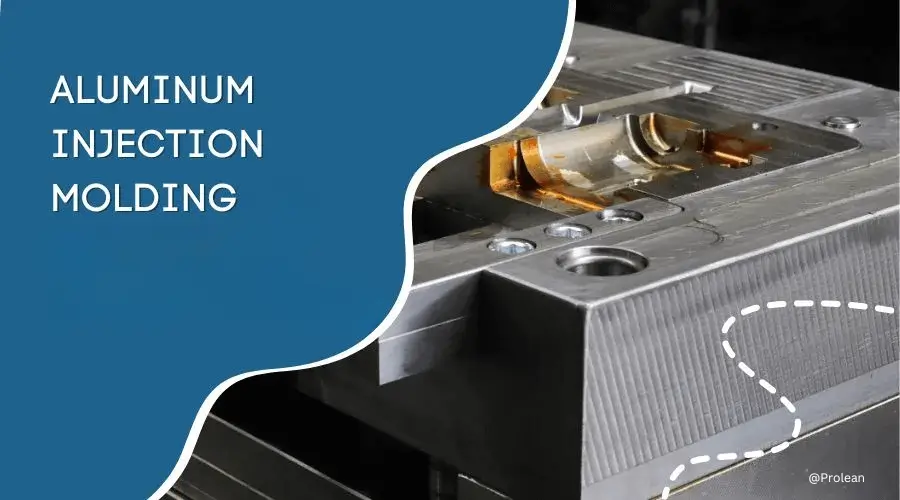
Aluminum Injection Molding
What is Aluminum Injection Molding?
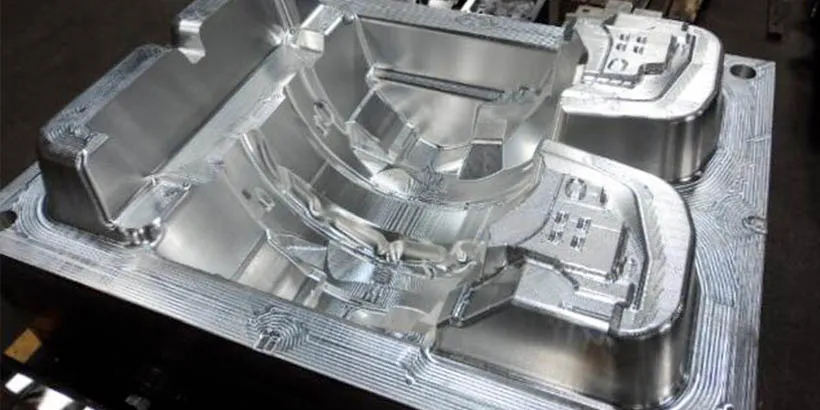
Aluminum Injection Molds
Aluminum Injection Moulding is an advanced process of producing plastic parts with aluminium moulds at higher efficiency and speed. Aluminum molds are lighter, provide quicker results, and are easier to machine, making them ideal for low-volume injection molding and prototyping compared to conventional steel molds. High thermal conductivity accelerates cooling and maintains production cycles without sacrificing precision or quality.
This process is best suited for companies that need a very short lead time or a low-cost tooling solution. Aluminium injection moulding is used equally well for small or large productions. It extends to various fields like the automotive, aerospace, electronic, medical appliance, and consumer goods industries. Aluminum injection molding has proved to be a game-changer for low-cost companies that need flexibility and high-quality outcomes in today’s fast-paced manufacturing world!
The Aluminum Injection Molding Process
The use of aluminium molds in injection molding includes the following steps:
- Mold Design: The design of the mold is made using CAD software, which is required for design of plastic parts.
- Mold Machining: The aluminum mold is then precisely milled and shaped on CNC machines that match the design.
- Polishing and Finishing: The aluminum mold is fine-polished to generate detailed features and smooth surfaces.
- Injection Molding Setup: An aluminum mold is mounted on the injection molding machine.
- Material Injected: Plastic material melts and flows into the mold cavity under pressure.
- Cooling and Solidification: The plastic cools rapidly because aluminum has high thermal conductivity.
- Part Ejection: When the part has hardened, it is ejected from the mold, ready for post-treatment and assembly.
Making aluminum molds is highly suitable for low-volume production and prototyping due to its efficient process with reduced cycle times.
Try Prolean Now!
Advantages of Aluminum Injection Molding
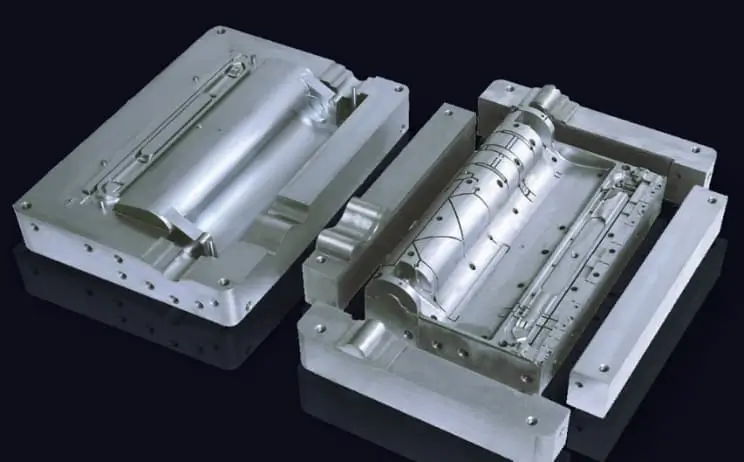
Advantages of Aluminum Molds
Aluminum injection molding benefits the manufacturer with many benefits in various industries. Some of the benefits include the following:
- Cost-Effective for Low-Volume Production:
One of the most notable benefits of aluminum injection molding is being relatively inexpensive, especially in low-volume injection molding. Steel molds have higher costs, and are generally used for mass production runs. However, aluminum molds in injection molding are relatively inexpensive and quicker to make, and ideal for lower-volume injection molding projects.
- Faster Lead Times:
Aluminum injection molds typically have shorter lead times than steel. Aluminum is a softer material and easier to machine, and the entire design and build as a project can be undertaken in significantly less time than with steel. This is excellent for firms whose need is to develop things quickly or to produce low quantities.
- High precision and detail:
With aluminum injection molds comes the possibility of very high precision molding for complex, intricate parts. Aluminum is a material that conducts heat exceptionally well and transfers it equally so that the area around this mold will cool evenly, with much less of a chance of such defects as warping or shrinkage.
- Lightweight and Durable Parts:
Some of the benefits of aluminum injection molding involve lightweight material content, and light parts produced through the mold by injection. Its advantages are particularly helpful in the automotive and aerospace industries, where lightweight will be a major factor in the final design and performance.
- Flexibility in Design:
Aluminum molds are tolerant of a wide diversity of part designs and sizes. Whether the part is simple or more complex, multi-function, aluminum injection molding allows for good flexibility in that a manufacturer would produce parts whose features are intricate, with thin walls, and undercuts.
- Lower Tooling Costs:
One of the other major costs related to injection molding is the tooling costs. Even though tooling costs for plastic injection molds are very expensive, savings are made in terms of aluminum molds for injection molding as they do not incur this cost. This goes a long way into establishing start-ups or small businesses as they cannot afford investment in costly steel.
- Reusability:
Reusable several times for cycles in injection molding, aluminum molds are a hard material that can work well through many cycles in production but could be prone to wear and tear faster than steel molds, depending on the material and complexity of the parts being produced.
Applications of Aluminum Injection Molding
Many companies use aluminum injection molding processes to manufacture plastic parts. Aluminum molds are used to inject molten plastic into a mold cavity, shaping it into the desired product. This process is suitable for applications where precision, efficiency, and a lightweight design are needed. Here are some key applications:
Automotive: The automobile industry uses aluminum injection molds to create plastic components for engines, brackets, and housings. The lightweight nature of these plastic parts helps reduce vehicle weight and improve fuel efficiency.
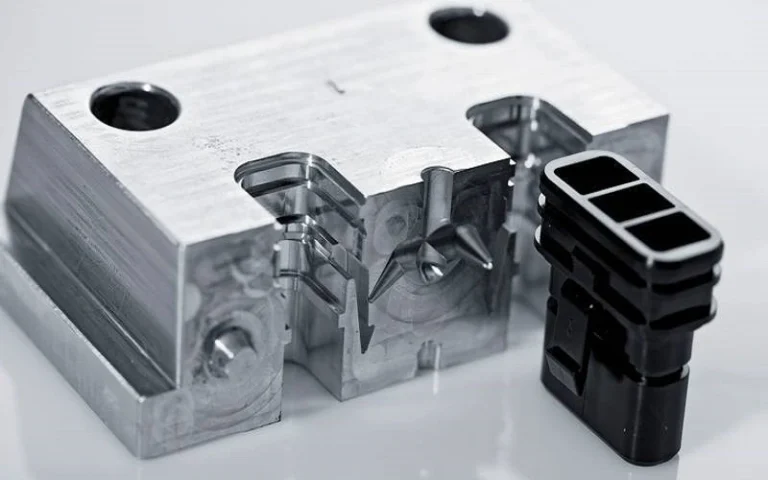
Aerospace: Aluminum injection molding is utilized to produce plastic components such as fittings, brackets, and housings. The high precision and lightweight nature of these parts are crucial in aerospace applications.
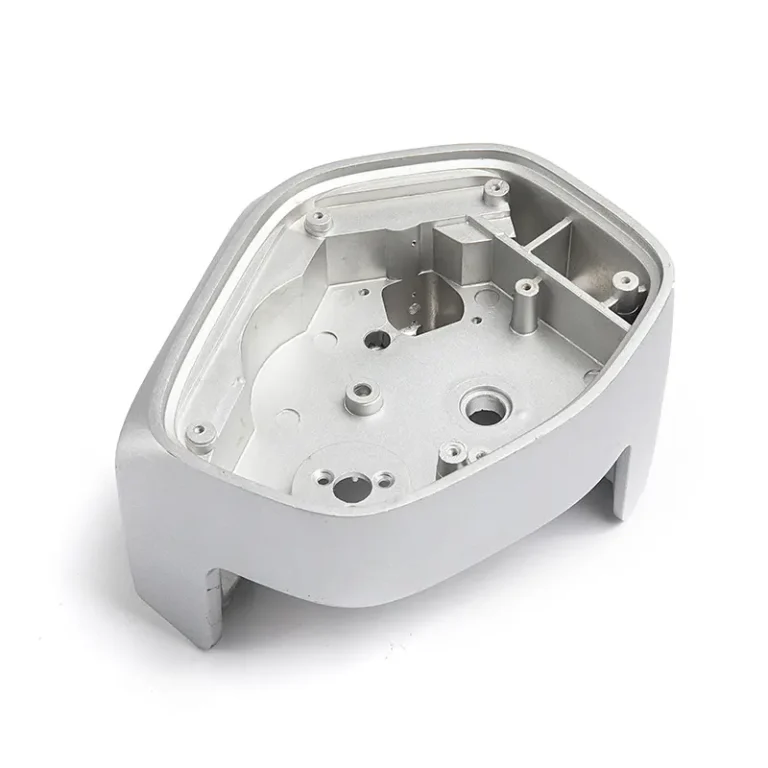
Consumer Products: Other applications in which aluminum injection molding can work well are consumer goods, such as home kitchen appliances, personal care products, and small household products.

Try Prolean Now!
Why Choose Aluminum Molds for Injection Molding?
- Cost Effectiveness
Aluminum molds are much cheaper to produce compared to steel molds, thus cost-effective options for low-run and low-volume injection molding.
- Rapid Production
Aluminium molds take much less time to manufacture compared to steel because the material is of lesser weight and easier to machine.
- Precision and Detail
The characteristics of aluminum molds make them very capable of producing precise parts with good surface finish details.
- Rapid Prototyping and Low-Volume Runs
Aluminum molds offer flexibility and quick turnaround as companies can test a product design and then make appropriate changes before committing to mass production.
- Industry Adoption
The best injection molding companies opt for aluminum molds requiring faster turnaround times with very good quality output.
Low-Volume Injection Molding and Its Importance
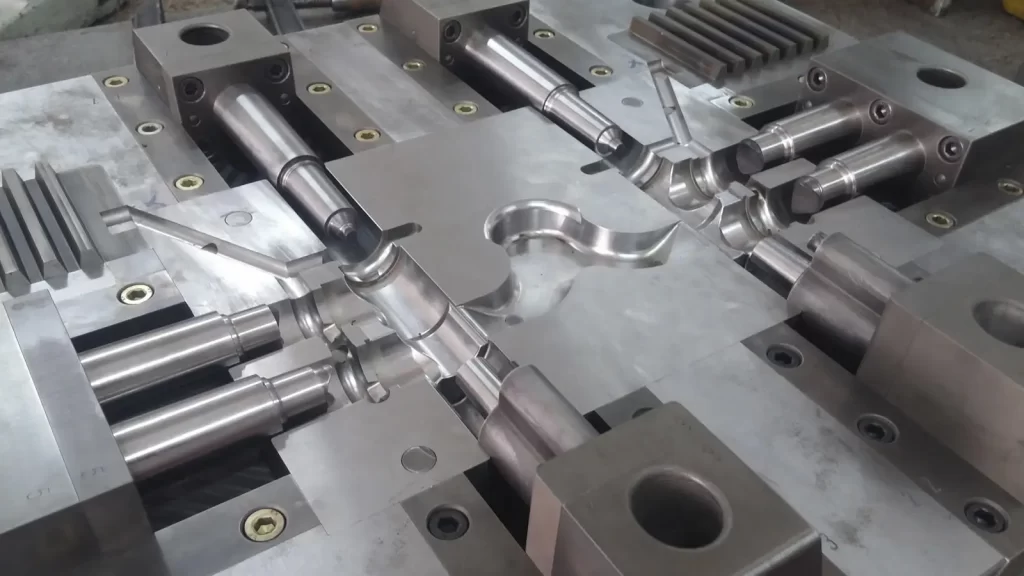
Aluminnum Molds
Low-volume injection molding is an appropriate option for product designers, start-ups, and firms testing new products. The firms that manufacture parts that run in the quantity of hundreds and up to a few thousand units are known as low volume injection molding firms. It consequently helps businesses reduce the initial tooling cost required to produce high-quality functional parts.
The firms that Aluminum injection molds are particularly suitable for low-volume production because they have faster turnaround times and cheaper initial costs. For instance, making an aluminum mold for plastic injection may take weeks while a steel mold takes months to produce. This prototyping capability at breakneck speed permits the manufacturer to test his design, perfect his product, and scale up when necessary.
Conclusion
Aluminum injection molding provides a cost-effective and versatile method to deliver high-quality, lightweight, and long-lasting parts with global specifications from automobiles, electronics, and medical devices. It’s suitable for low-volume manufacturing runs. With lead times very fast, low tooling costs, and molding extremely accurate, it really can be the best option for a business seeking to create new products or scale up production.
However, in careful consideration of injection molding cost, design, and volume for production, optimize the process and produce the best with the services of experienced injection molding service providers today. Let’s bring your vision to life—contact us for a consultation!
Creating an Aluminum Injection Mold
FAQs About Aluminum Injection Molding
What is the difference between aluminum and steel molds?
Aluminum molds can be cheaper and quicker to make them ideal for low-production runs. Steel molds are stronger, which suits high production the best but cost a premium initially.
Can aluminum injection molds be used for high-volume production?
Aluminum takes much shorter lead times than it does to have just a couple of weeks while the same steel mold has to wait for over a few months’ time for production to take place.
How long does it take to produce an aluminum mold?
However, as we have already seen, aluminum molds can easily address high volume production issues; though the lifetime of aluminum mold is considerably shorter than that of steel mold, it makes the aluminum mold less suitable for long-term high volume production.
What industries use aluminum injection molding?
Aluminum injection molding is anchored on some high-precision needs in combination with minimum weight, which certain fields like auto, aerospace and electronics, health, and consumer goods demand.
Is aluminum injection molding cost-effective for prototyping?
Aluminum injection molding is cost-effective to prototype with low-run manufacturing or test designs.
Can aluminum molds be reused?
Yes, it’s possible to reuse aluminium moulds, though generally, their reusability is lower than that of moulds made from steel, and the use is typically for a relatively short run when producing many parts.

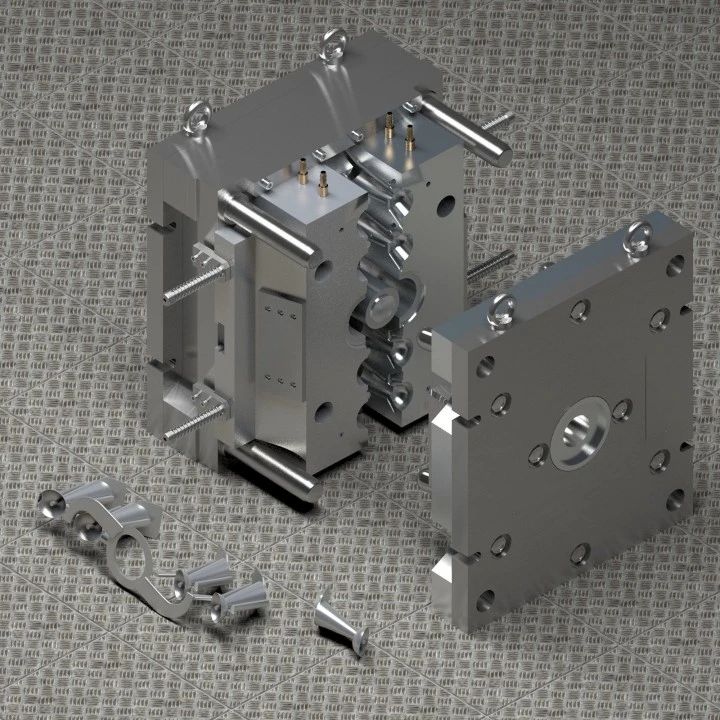
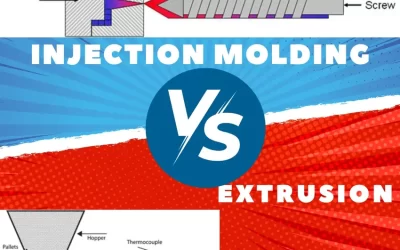

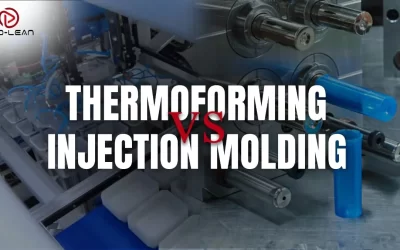
0 Comments